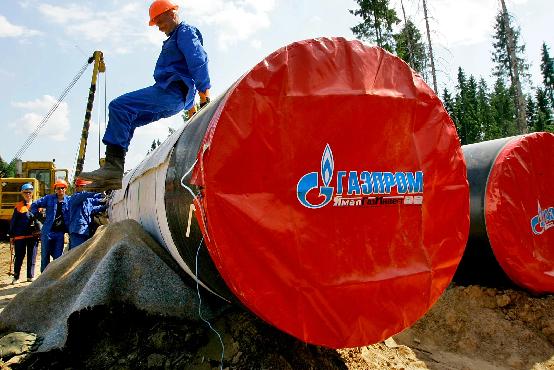
Since Russia's invasion of Ukraine in February 2022, trade between the European Union and Russia has sharply declined. The EU has implemented many import and export restrictions, resulting in a 61% decrease in exports to Russia and an 89% decrease in imports from Russia between the first quarter of 2022 and the second quarter of 2025.
According to data from the European Statistical Office, imports from Russia decreased in the second quarter of 2025, while exports to Russia increased compared to the previous quarter. As a result, the EU's trade deficit with Russia has turned into a small surplus of 500 million euros. The import value is 7 billion euros, the export value to Russia is 7.5 billion euros, and the total trade volume reaches 14.5 billion euros. Compared to the first quarter of 2022, the trade volume decreased by 82%, with a trade volume of 81.9 billion euros at the time of the outbreak of the Russia Ukraine war. This quarter was the third highest level since records began in 2002, reaching a peak of 82.9 billion euros in the first quarter of 2013.
The overall trade balance between the EU and Russia is closely related to energy products. In 2021 and 2022, high energy prices pushed the energy trade deficit to its peak of 42.8 billion euros in the second quarter of 2022. However, by the second quarter of 2025, import restrictions and a decrease in energy prices have reduced the deficit to 4.2 billion euros. The EU's goal is to reduce its energy dependence on Russia and has made significant progress. In the first quarter of 2021, Russia was the largest oil supplier to the European Union. However, after the invasion of Ukraine, there was a significant shift in the EU's oil trade. The EU's ban on the import of Russian crude oil by sea, which came into effect on December 5, 2022, coupled with an embargo on refined oil products, has led to a sharp decline in the quantity of imports from Russia. Therefore, Russia's share in oil imports has decreased from 29% in the first quarter of 2021 to only 2% in the second quarter of 2025. During the same period, the share of imports from the United States increased by 5 percentage points, and the share of imports from Norway increased by 4 percentage points. During the same period, Russia's share of EU natural gas imports decreased from 39% to 13%. The import volume of nickel has decreased from 41% to 15%, while the import volume of steel has decreased from 18% to 6%.
From the perspective of reasons, geopolitical factors are an important driving force. In recent years, the European Union and Russia have different positions and propositions in political ideology, geopolitics, and other aspects, forcing the EU to formulate a series of economic sanctions against Russia. The sanctions policy restricts cooperation between the two countries in energy, finance, trade, and other areas, leading to a direct reduction in trade scale. For example, the EU's restrictions on energy imports to Russia have had an impact on the important economic income of Russia's energy exports. Russia has also imposed counter sanctions on the EU for reducing imports of goods, resulting in a reduction in trade volume.
The differences and adjustments in economic structure also play a key role. The EU focuses on services and high-end manufacturing, while Russia has a high dependence on foreign energy. With the adjustment of energy structure, the EU reduces its dependence on traditional fossil fuels, seeks alternative ways to reduce energy supply from Russia, and disrupts the supply-demand pattern of trade. At the same time, in the process of Russia's economic transformation, the demand for goods from EU countries is gradually decreasing, and cooperation is sought with emerging markets in Asia to divert EU trade flows.
In international trade, the reduction of EU exports to Russia and the decrease in import trade between Russia and the EU have to some extent changed the direction of international trade. At the same time, the trade scale between some new emerging countries such as China and India and the EU and Russia continues to expand, thus changing the previous situation where international trade was dominated by Europe and America, making the world trade pattern develop towards multipolarity, and also giving other countries more opportunities to integrate into the world economic and trade process, achieving a more fair and diversified world economic and trade.
In summary, the fact that the trade volume between the EU and Russia has reached its lowest point is complex and diverse. In addition to political and economic factors, it also affects the current world trade and economic development. Both parties facing difficulties should not get angry and cause a series of vicious incidents. They should handle the issue calmly and rationally, resolve the problem through communication and negotiation, and ensure the long-term development of world trade. In addition, countries involved in the development of world trade must work together to eliminate the impact of trade protectionism and unilateralism policies, and make world trade healthier.

The U.S. third-quarter GDP growth rate, strikingly highlighted at 4.3%, not only surpassed market expectations but also earned the label of "the fastest in two years."
The U.S. third-quarter GDP growth rate, strikingly highligh…
Recently, US personnel intercepted a "Century" super oil ta…
According to Xinhua News Agency, the subtle changes in the …
The rapid development of artificial intelligence has brough…
In December 2025, Taiwan's political scene was shaken by a …
When Apple appears for the Nth time on the list of penaltie…